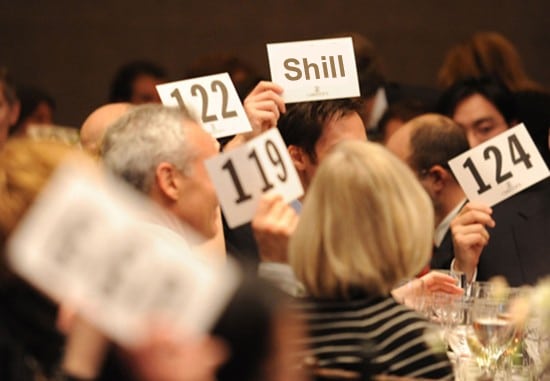Traditional auctions have long been considered a space of excitement and opportunity, where bidders compete for coveted items and the thrill of winning is palpable. However, behind this seemingly fair and transparent process, a dark side lurks – scams that prey on unsuspecting participants. In this eye-opening article, we delve deep into the underbelly of traditional auctions, shedding light on the various fraudulent practices that tarnish the industry.

From shill bidding and fake items to manipulated reserve prices and undisclosed defects, scammers employ numerous tactics to deceive buyers and inflate prices. We examine real-life cases that highlight the extent of these scams, exposing the alarming frequency with which they occur. By raising awareness of these fraudulent activities, we empower auction-goers to protect themselves from falling victim to dishonest practices.
Table of Contents
- Introduction
- Understanding the potential risks
- The allure of traditional auctions
- The infiltration of unscrupulous individuals and schemes
- The need for awareness and knowledge
- Common scams in traditional auctions
- Fake or counterfeit items
- Shill bidding and bid manipulation
- Misrepresentation of items
- Auction house collusion
- Conclusion
Understanding the potential risks
The world of traditional auctions has long been touted as a thrilling and lucrative arena, where bidders can uncover rare treasures and secure coveted items at competitive prices. However, beneath the veneer of excitement and exclusivity, a dark underbelly of scams and fraudulent practices lurks, threatening to undermine the very foundations of this age-old industry.
Auction houses, which have historically been revered as bastions of integrity and expertise, have not been immune to the infiltration of unscrupulous individuals and schemes. From the sale of counterfeit goods to the manipulation of bidding processes, the potential for financial loss and reputational damage for unsuspecting participants is significant. As the popularity of traditional auctions continues to grow, it has become increasingly crucial for buyers and sellers to be aware of the risks and to arm themselves with the knowledge necessary to navigate this complex landscape successfully.
Common scams in traditional auctions
The world of traditional auctions is rife with various scams and fraudulent practices, each designed to exploit the trust and enthusiasm of participants. From the sale of counterfeit goods to the manipulation of bidding processes, the tactics employed by unscrupulous individuals can be both sophisticated and deceptive. In this section, we will explore some of the most prevalent scams that have plagued the industry, equipping you with the knowledge to identify and avoid these pitfalls.
Fake or counterfeit items

One of the most common scams in traditional auctions is the sale of fake or counterfeit items. Unscrupulous sellers may attempt to pass off replicas, reproductions, or outright forgeries as genuine, high-value artifacts or collectibles. These fraudulent items can be incredibly difficult to detect, even for seasoned experts, and can result in significant financial losses for unsuspecting buyers.
These scams’ impact extends far beyond the individual transaction, as the proliferation of counterfeit goods can erode public trust in the auction industry. Auction houses have a responsibility to implement rigorous authentication processes and to disclose any known issues or uncertainties about the provenance of the items they offer. Failure to do so can leave buyers vulnerable and undermine the integrity of the entire system.
Shill bidding and bid manipulation

Another prevalent scam in traditional auctions is the practice of shill bidding, where the auction house or the seller employs individuals to place bids on their behalf, artificially inflating the final sale price. This deceptive tactic creates the illusion of competition and demand, luring unsuspecting buyers into a bidding war and driving up the final price beyond its true market value.
Shill bidding is not only unethical but also illegal in many jurisdictions, as it undermines the fairness and transparency of the auction process. Auction houses that engage in or condone this practice are betraying the trust of their customers and eroding the credibility of the industry.
Misrepresentation of items

In the world of traditional auctions, the accurate and honest representation of items is paramount. However, some unscrupulous sellers may attempt to misrepresent the condition, provenance, or other critical details of the items they offer, leading to buyer disappointment and financial loss.
This scam can take many forms, from deliberately omitting known defects or flaws to exaggerating the rarity or significance of an item. In some cases, sellers may even provide false or misleading information about the item’s history, ownership, or authenticity, luring buyers into a false sense of security and inflating the perceived value.
Auction house collusion

In some cases, the scams that plague the traditional auction industry may even originate from within the auction houses themselves. Instances of collusion between auction staff, consignors, and even other bidders have been reported, where they work together to manipulate the bidding process and inflate the final sale prices.
This type of scam can take many forms, from the intentional undervaluation of items to the selective withholding of information from buyers. In some cases, auction house employees may even engage in shill bidding or coordinate with a network of “buyers” to create the illusion of competition and drive-up prices.
The consequences of auction house collusion can be devastating for individual buyers and the industry. When the very institutions that are meant to uphold the integrity of the auction process are complicit in fraudulent activities, the public’s trust in the system is shattered, and the entire industry’s reputation is called into question.
Conclusion
The prevalence of scams in traditional auctions poses significant risks to both buyers and sellers. Common fraudulent practices include the sale of counterfeit items, shill bidding, and misrepresentation of goods, all designed to exploit participants’ trust. Auction houses may even engage in collusion, further undermining the integrity of the auction process. As these scams threaten the industry’s reputation, it is crucial for participants to remain vigilant, educate themselves about potential risks, and adopt strategies to protect themselves from falling victim to these deceitful tactics. Awareness is the first step toward safeguarding the auction experience.

